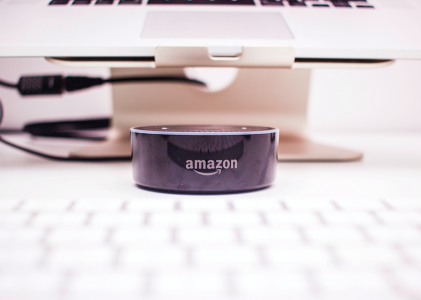Two years ago we took a deep soul-searching look at paid search management practices and technology and decided both were inadequate. Since then we’ve developed completely new management practices and technology, and it’s time to roll them both out publicly. The management practices are built around a framework called ‘High Resolution PPC‘. It’s based on the idea that there are three distinct stages in the paid search process and specific steps and checks to sequentially create a well formed and effective campaign. The technology is our ClickEquations platform, and was developed based on the idea that paid search is not as efficient and effective as it could be because the software tools we have had are inadequate in a number of very specific ways. Background We’ve been professionally managing paid search accounts for about five years. As the market and engine platforms have developed, the size and complexity of the accounts managed has grown. Working with both venture-backed startups and Fortune 100 companies we live with high expectations, competitive sensitivities, and serious budget and ROI oversight. While it’s been exciting to go along for the ride as the market exploded and the technology evolved, anyone who’s lived deeply in paid search management over the past years knows the day-to-day hasn’t been exactly a picnic.  It’s a lot closer to a horror show. The search engines are opaque (to put it kindly) on multiple layers. If you try to actually figure out what’s happening and why, you find key information is missing, available information is contradictory, and things aren’t exactly consistent. The Matching Algorithms used by the Search Engines and their rules change constantly. The image of easy-management and easy-money that caught the media’s attention in the early years is ingrained in the imaginations of VPs of Marketing, Merchandising Managers, and even some Directors of eCommerce. Which means they have expectations and make requests that make the PPC Manager’s head spin – on a daily basis. But most importantly, the amount of change that the industry has gone through over these short, jam-packed years has not been kept up with by either the ‘best practices’ or the ‘delivered technology’. Paid search management is a young profession, one in which everyone has been learning on the job, sharing info via the web, and attending those endless conferences, but past a very small number of truly universal tactics there is no agreed upon ‘right way’ to organize and manage paid search, in even the most general sense. That’s no way to spend $9 Billion or $10 Billion.
It’s a lot closer to a horror show. The search engines are opaque (to put it kindly) on multiple layers. If you try to actually figure out what’s happening and why, you find key information is missing, available information is contradictory, and things aren’t exactly consistent. The Matching Algorithms used by the Search Engines and their rules change constantly. The image of easy-management and easy-money that caught the media’s attention in the early years is ingrained in the imaginations of VPs of Marketing, Merchandising Managers, and even some Directors of eCommerce. Which means they have expectations and make requests that make the PPC Manager’s head spin – on a daily basis. But most importantly, the amount of change that the industry has gone through over these short, jam-packed years has not been kept up with by either the ‘best practices’ or the ‘delivered technology’. Paid search management is a young profession, one in which everyone has been learning on the job, sharing info via the web, and attending those endless conferences, but past a very small number of truly universal tactics there is no agreed upon ‘right way’ to organize and manage paid search, in even the most general sense. That’s no way to spend $9 Billion or $10 Billion.  And the software tools haven’t fared will in this rapid-change environment either. The engines built interfaces that primarily serve their own needs. Instead of thinking about how paid search managers actually should and do work, and building tools to facilitate this effort, the tools are organized around the needs of the engines and their algorithms. This leaves search managers often facing screens with 5 open applications, each which has one piece of the data or one tool they want, none designed for the whole job. In this environment work flow requires on a lot of application and context switching, cutting and pasting, and mental contortions supported by the acceptance of silly limitations and obvious inaccuracies. We think it’s time for both the process and technology of PPC to catch up with the market realities and demands. Introducing High Resolution PPC & ClickEquations In the next few posts I’ll formally introduce both High Resolution PPC and ClickEquations. High Resolution PPC starts with three primary goals – targeting the right prospects, assigning an accurate value to each, and then satisfying them. It provides the context for using the available paid search controls and options with clear ways to measure results and priorize work. ClickEquations was and is being developed with three primary goals as well – delivering clear and accurate data, helping to prioritize opportunities and tasks, and automating as many PPC process steps as possible. We’re excited to share the results of the last few years of work, and are eager to get your feedback. After the upcoming introductory posts, I’ll deep dive into the specific components of each over the coming weeks and months.
And the software tools haven’t fared will in this rapid-change environment either. The engines built interfaces that primarily serve their own needs. Instead of thinking about how paid search managers actually should and do work, and building tools to facilitate this effort, the tools are organized around the needs of the engines and their algorithms. This leaves search managers often facing screens with 5 open applications, each which has one piece of the data or one tool they want, none designed for the whole job. In this environment work flow requires on a lot of application and context switching, cutting and pasting, and mental contortions supported by the acceptance of silly limitations and obvious inaccuracies. We think it’s time for both the process and technology of PPC to catch up with the market realities and demands. Introducing High Resolution PPC & ClickEquations In the next few posts I’ll formally introduce both High Resolution PPC and ClickEquations. High Resolution PPC starts with three primary goals – targeting the right prospects, assigning an accurate value to each, and then satisfying them. It provides the context for using the available paid search controls and options with clear ways to measure results and priorize work. ClickEquations was and is being developed with three primary goals as well – delivering clear and accurate data, helping to prioritize opportunities and tasks, and automating as many PPC process steps as possible. We’re excited to share the results of the last few years of work, and are eager to get your feedback. After the upcoming introductory posts, I’ll deep dive into the specific components of each over the coming weeks and months.



